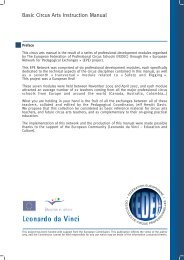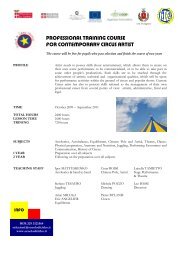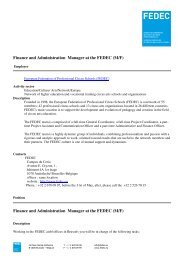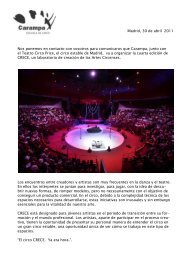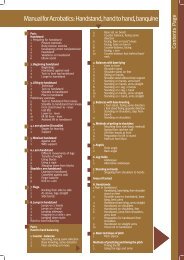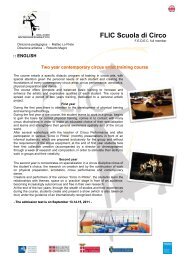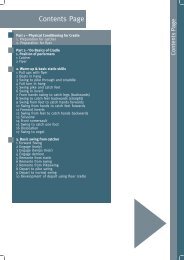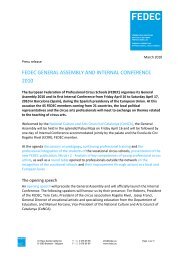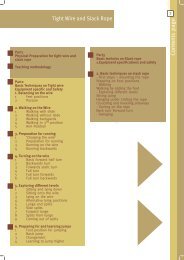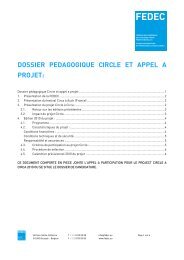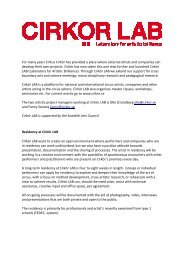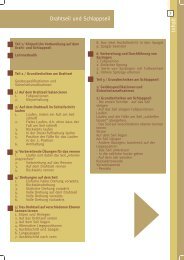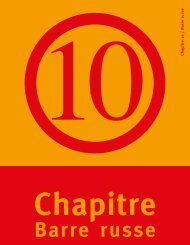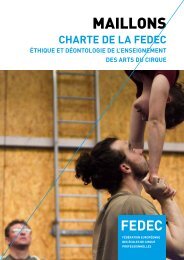InstructIon MAnuAL - Fedec
InstructIon MAnuAL - Fedec
InstructIon MAnuAL - Fedec
Create successful ePaper yourself
Turn your PDF publications into a flip-book with our unique Google optimized e-Paper software.
1<br />
Devising:<br />
managing the training<br />
programme over time<br />
in a 3 years’ higher education course where students<br />
train on the cyr wheel for an average of 4 hours a week,<br />
the over-arching aim is to allow students to perform a<br />
complete act but also to equip him/her with the knowledge<br />
and understanding necessary to train alone and<br />
continue to develop afterwards.<br />
the total length of the training course is therefore divided<br />
into three large parts or years or what are also called,<br />
macro cycles.<br />
every macro cycle is divided into two semesters, or<br />
meso cycles. these are also divided into micro cycles, or<br />
months, for an easier planning.<br />
this division has to be adapted according to the duration<br />
of the training. it can give a clear vision of the overall<br />
objectives and the training programme, for both the student<br />
and the teacher.<br />
regular presentations of the student’s work, whether<br />
based on technique or artistic research, enable assessment<br />
of the student’s progress. new goals can be set for<br />
the following learning cycle, e.g. new technical moves to<br />
be mastered, progressive steps to create an act. as the<br />
student’s mastery level increases, the initial moves and<br />
progressions that have been learnt and developed, can be<br />
replaced by newly acquired elements.<br />
the elements that make up the different sessions are:<br />
– Discovering the discipline: exploring the equipment,<br />
sensations and feelings, basic technical moves,<br />
– Basic, intermediate and advanced technical moves, as<br />
the student makes progress,<br />
– Working on the sequence of moves and links between<br />
them, implementation of technical routines, integration<br />
of choreographed links,<br />
– endurance work, with and without equipment,<br />
– understanding external aspects: games, attitudes,<br />
rhythm, exploration of space.<br />
– Working on rhythms (different musical contributions).<br />
– creating an act: creation and work on different parts,<br />
rehearsal with music and costumes, theatre designing.<br />
© fedec 2011 CYR WHEEL<br />
17



